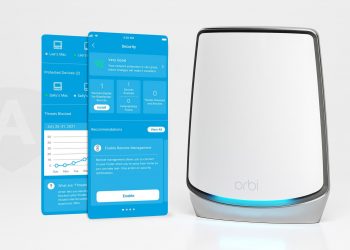SEATTLE: ExtraHop, the leader in cloud-native network detection and response, today issued a report warning of the potential impact of the Ripple20 vulnerabilities if affected software goes undetected and unpatched. Analyzing data across its customer base, ExtraHop threat researchers found that 35% of IT environments are vulnerable to Ripple20. The Ripple20 threat is a series of 19 vulnerabilities found in the Treck networking stack, a low-level TCP/IP software library developed by Treck Inc. that is commonly used by device manufacturers across many industries, including utilities, healthcare, government, and academia. The impact of this threat “ripples” through complex software supply chains, making it a difficult vulnerability to mitigate.
The JSOF threat research organization found the Ripple20 vulnerability (CVE-2020-11901) in June 2020, and unveiled the details to impacted device manufacturers and security vendors to give them ample time to deploy patches and create detections before releasing their findings to the general public. The ExtraHop threat research team studied customer data and discovered vulnerable software in one out of every three IT environments. With industry average dwell times hovering around 56 days, these devices are a ticking time bomb if left alone. ExtraHop experts predict that this exploit will be widely used by attackers as an easy backdoor into networks across industries around the globe.
“The devices that utilize the Treck stack are far-reaching with the potential for vast exploitation,” said Jeff Costlow, CISO, ExtraHop. “A threat actor could conceivably use this vulnerability to hide malicious code in the embedded devices for an extended period of time, and traditional endpoint or perimeter security solutions like EDR or NGFW will not have visibility into this set of exploits.”
Visibility and behavioral analysis of managed and unmanaged devices, including IoT, and visibility into unusual activity from potentially exploited devices within an organization’s east-west traffic, are table stakes for a secure network. Organizations can take a number of steps to help mitigate the risk from Ripple20.
ExtraHop mitigation recommendations include:
- Patching: Vendors utilizing the Treck Software were given early access to the threat details so they could start producing patches immediately. Unfortunately, a large number of devices have discontinued support, which has made it difficult to account for all vulnerable device makes and models.
- Removal from Service: If a patch is unavailable for the affected device, it’s recommended that organizations consider removing devices from service entirely and replacing them with known secure devices. Removing the device will improve hygiene and compliance, critical for keeping environments secure.
- Monitor for Scanning Activity: Before a vulnerable device can be compromised, attackers must first find it. Organizations will need to assess their own practices to understand and monitor which scans are legitimate and which could indicate malicious intent.
- Exploit Detection: Because not all vulnerable devices may be identified and patched, it is crucial that organizations detect unusual activity resulting from a Ripple20 exploit as it occurs, such as lateral movement and privilege escalation. Network-based detection is a requirement in this case because embedded devices that use the Treck software will not support endpoint agents.
- Isolate Vulnerable Devices: In circumstances where it is not possible to patch affected devices, it is recommended that security teams take the following steps:
- Verify devices are not publicly accessible
- Move devices to a network segment isolated from local subnets
- Drop all IP-in-IP traffic destined for affected devices
- Drop all IPv6 traffic destined for affected devices
Read full report in PDF format

for developers and enthusiasts







